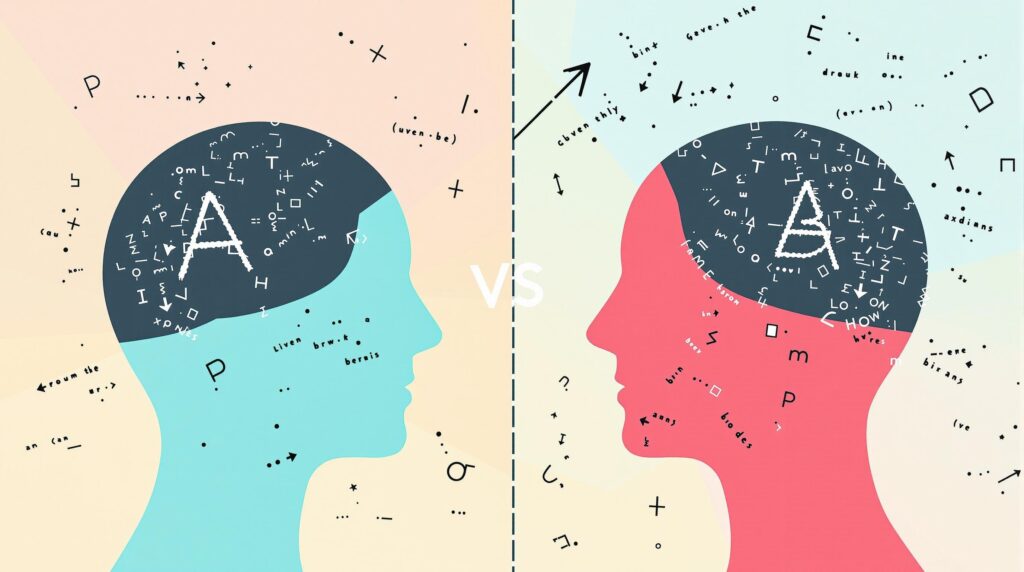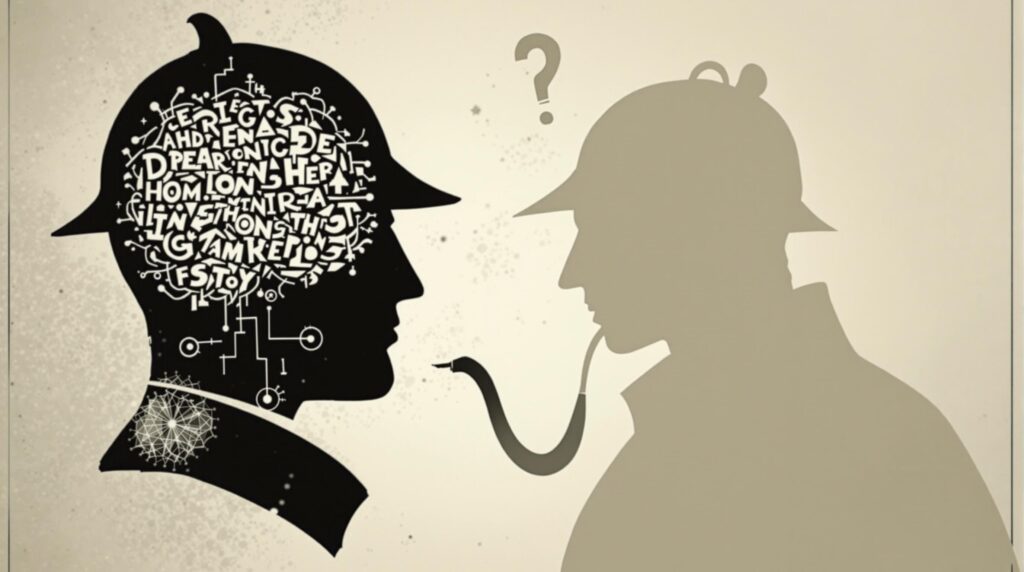The distinction between Type A and Type B personality types forms a foundational concept in health psychology, shedding light on how different behavioral patterns influence our response to stress and daily challenges. Researchers originally developed this classification system to understand the relationship between personality traits and cardiovascular disease, but it has since expanded to explain broader patterns in how people approach work, relationships, and life’s pressures.
Key Takeaways
- Type A personalities tend to experience higher stress levels and greater risk of stress-related health problems
- People with Type B characteristics typically maintain better work-life balance and experience less anxiety
- Understanding your personality type can help develop personalized stress management techniques
- Neither type is inherently better or worse – both have distinct advantages in different situations
- Many individuals display a mix of traits from both Type A and Type B personalities
The Origins of Type A vs Type B Personality Theory
The Type A and Type B personality theory originated in the 1950s through the work of cardiologists Meyer Friedman and Ray Rosenman. These physicians noticed that their cardiac patients often exhibited similar behavioral patterns, which led them to investigate the connection between personality traits and heart disease. Their groundbreaking research suggested that certain behavioral patterns—which they labeled Type A—correlated with an increased risk of cardiovascular problems.
In their initial studies, Friedman and Rosenman identified Type A individuals as those who displayed competitive, ambitious, and time-urgent behaviors. Conversely, they described Type B personalities as more relaxed, less competitive, and less concerned with time constraints. This binary classification system has since evolved, with most modern psychologists recognizing that people typically fall somewhere on a spectrum between these two extremes rather than fitting perfectly into either category.

Characteristics of Type A Personalities
Type A personalities are often characterized by their driven, ambitious nature and tendency toward high-stress responses. They typically exhibit specific behavioral patterns that distinguish them from their Type B counterparts. Understanding these traits can help identify if you lean toward this personality type.
The hallmark characteristics of Type A personalities include:
- Competitive drive and strong achievement orientation
- Chronic sense of time urgency and impatience
- Multitasking tendencies and difficulty relaxing
- Perfectionism and high self-criticism
- Easily frustrated by delays or perceived inefficiencies
In professional settings, Type A individuals often excel in fast-paced environments that reward quick decision-making and results-oriented approaches. They tend to take on leadership roles naturally and push themselves and others toward ambitious goals. However, this same drive can lead to increased stress levels, burnout, and difficulty maintaining work-life balance.
Characteristics of Type B Personalities
Type B personalities present a marked contrast to their Type A counterparts, displaying a more relaxed and even-tempered approach to life’s challenges. These individuals tend to move through the world with less urgency while maintaining a steady, productive pace that suits their more balanced outlook.
Key traits that define Type B personalities include:
- Patient and relaxed demeanor in most situations
- Ability to enjoy the present moment without excessive worry about future outcomes
- Preference for quality over quantity in work and relationships
- Lower competitive drive and more collaborative approach
- Greater resilience to everyday stressors
In work environments, Type B individuals often excel in roles requiring creative thinking and thoughtful analysis. Their ability to remain calm under pressure makes them valuable team members during crises, and their more balanced approach to achievement often results in sustainable productivity over the long term. While they may not always display the urgent energy of Type A colleagues, their steady contributions and ability to maintain perspective bring essential balance to many workplaces.
Impact on Stress Management and Health
The distinction between type A vs type B personalities becomes particularly relevant when examining how each type responds to and manages stress. Research consistently shows that Type A individuals typically experience higher physiological arousal when faced with stressors, with increased heart rate, blood pressure, and cortisol levels compared to their Type B counterparts.
This heightened stress response in Type A personalities has been linked to several health concerns:
- Increased risk of cardiovascular issues, including hypertension
- Greater susceptibility to stress-related digestive problems
- Higher rates of anxiety and related mental health challenges
- Compromised immune function during high-stress periods
Type B individuals generally demonstrate more effective stress management capabilities, maintaining lower physiological activation during challenging situations. Their natural tendency toward patience and perspective-taking serves as a protective factor against many stress-related health concerns. However, this doesn’t mean Type B personalities are immune to stress—they simply tend to process and respond to it differently.
Personality Types and Workplace Productivity
The workplace often highlights the stark differences between Type A and Type B approaches to productivity. Type A individuals typically adopt an intense, deadline-driven work style characterized by multitasking, rapid task completion, and a constant sense of urgency. This approach can lead to impressive short-term productivity but may result in burnout over extended periods.
Type B personalities, conversely, tend to maintain a more measured pace, focusing on one task at a time and prioritizing quality over speed. Their sustainable work rhythm often yields consistent results without the extreme highs and lows experienced by Type A colleagues. This doesn’t necessarily mean they accomplish less—they simply approach their work differently.
Different workplace environments may favor one type over the other:
- Fast-paced, high-pressure settings like emergency services or deadline-driven industries often value Type A traits
- Creative fields, research positions, and roles requiring deep thinking may better suit Type B approaches
- Collaborative team environments benefit from a mix of both types, balancing urgency with thoughtfulness
Many successful organizations recognize the value of both personality types, creating structures that leverage the strengths of each while mitigating potential weaknesses. This might include pairing Type A and Type B individuals on projects where both quick action and careful consideration are needed.
Personality Types in Relationships
The dynamics between Type A and Type B personalities become particularly evident in close relationships, whether romantic partnerships, friendships, or family connections. These personality differences can either complement each other beautifully or create friction, depending on awareness and communication strategies.
In romantic relationships, Type A and Type B pairings often experience both benefits and challenges:
- Type A partners may bring structure, organization, and drive to the relationship
- Type B individuals contribute patience, emotional steadiness, and perspective
- Conflicts may arise around pace, priorities, and approaches to leisure time
- Complementary strengths can create balance when differences are respected
Communication remains the critical factor in navigating these personality differences successfully. When Type A individuals recognize their tendency toward impatience and Type B partners acknowledge their sometimes relaxed approach to schedules, both can adjust their expectations and behaviors to create harmony. This mutual understanding often leads to stronger relationships where both parties grow from their different perspectives.
Assessing Your Personality Type
Determining where you fall on the Type A vs Type B spectrum involves honest self-reflection about your typical behaviors, thought patterns, and emotional responses. While formal assessments exist, simple self-observation can provide valuable insights into your personality tendencies.
Consider these questions to help identify your personality type:
- Do you regularly feel impatient when waiting in lines or traffic?
- How competitive are you in work and recreational activities?
- Do you find it difficult to relax or enjoy leisure time without feeling guilty?
- Can you easily let go of minor inconveniences, or do they frustrate you significantly?
- Do you tend to multitask or prefer focusing on one thing at a time?
It’s important to remember that most people display a mix of characteristics rather than purely Type A or Type B traits. You might exhibit Type A behaviors in certain contexts (like work) while showing more Type B tendencies in others (such as social settings). This fluidity is perfectly normal and reflects the complexity of human personality.
Moving Beyond the Binary: Personality as a Spectrum
Modern psychology has largely moved away from strictly categorizing people as either Type A or Type B, recognizing instead that personality exists on a continuous spectrum. Most individuals display traits from both types to varying degrees, with their expression often depending on context, life stage, and personal growth.
This more nuanced understanding acknowledges several important factors:
- Personality traits can shift gradually over time through conscious effort
- Situational factors often influence whether Type A or Type B behaviors emerge
- Cultural and social expectations play a role in personality expression
- Many people develop adaptive strategies that incorporate the strengths of both types
Rather than viewing Type A traits as inherently problematic or Type B characteristics as universally beneficial, contemporary approaches focus on balanced integration of positive aspects from both types. This might involve Type A individuals cultivating more patience and mindfulness while Type B personalities develop greater structure and goal-orientation when beneficial.
Developing a Balanced Approach
Regardless of where you naturally fall on the personality spectrum, cultivating a balanced approach that draws on the strengths of both Type A and Type B traits can enhance your overall wellbeing and effectiveness. This balanced perspective allows for flexibility in responding to different life situations appropriately.
For those with strong Type A tendencies, beneficial practices might include:
- Implementing regular mindfulness or meditation practices
- Setting boundaries around work time and protected leisure activities
- Practicing patience in small daily situations
- Developing awareness of perfectionistic tendencies
Individuals with predominant Type B characteristics might benefit from:
- Creating more structured systems for time management
- Setting clear goals with specific deadlines
- Developing greater comfort with healthy competition
- Practicing more assertive communication when needed
The ideal approach isn’t about changing your fundamental personality but rather about developing complementary skills that provide greater adaptability. This flexibility allows you to respond appropriately to different situations—showing drive and urgency when truly needed while maintaining calm perspective during challenging times.
Conclusion
Understanding the distinctions between Type A and Type B personalities provides valuable insights into our behaviors, stress responses, and relationship patterns. Rather than viewing these categories as rigid boxes, I see them as useful frameworks for self-awareness that can guide personal development and improved interactions with others.
The most healthy approach involves recognizing your natural tendencies while cultivating flexibility to adapt your response base



